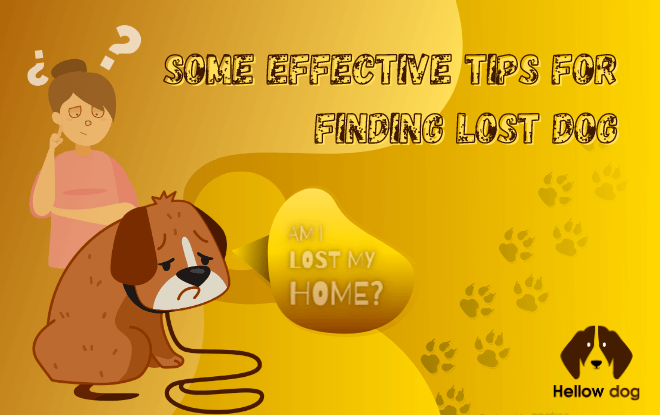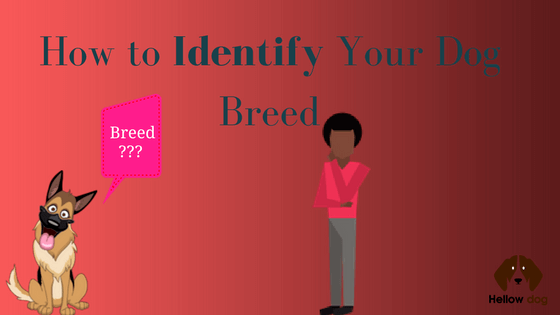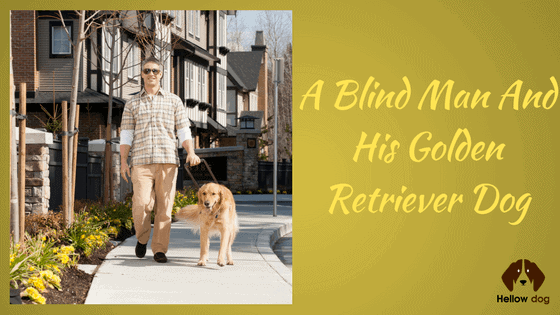Each year around the world, thousands of dogs are lost. Their owners are heartbroken because they never see their four-legged companion. However, there is still hope. Indeed, it is possible to put all the opportunities on your side to find missing dogs thanks to some tips for finding lost dog.
Besides, great stories are not uncommon. Although chances of finding lost dog after 24 hours are not high, some dogs are sometimes found several years after they disappear. The slogan is never to give up.
Here are all our tips for finding a lost dog to maximize your chances and find your quadruped animals as soon as possible.

Do not hesitate to ask questions to people you meet or your neighbors by leaving your contact details.
If your dog gets lost in a place where he doesn’t know, he will try to go back to where he got lost. You should leave a piece of clothing or an object with your scent in this place and return often. If you are lucky, it will only lie on the cloth. And if necessary, leave croquettes and water.
Tips for finding lost dogs
Find near you
Have you just noticed the disappearance of your dog? First, try to stay calm. The situation is stressful, but you need to keep your cool to act as effectively as possible.
Patrol in your neighborhood
The first thing to do is to take a walk around your neighborhood. Remember to take some treats with you. Call your dog, take a look under the cars, or ask questions of passers-by. You can even ring the bell to ask them if they’ve seen your pet.
What if I see my dog?
If you see your dog, be in control. Running towards him, calling him out loud, or yelling at him, might scare him away. Call him sweet and entice him with a treat. Praise him when he approaches you and rewards him with hugs. His return should be synonymous with happiness for him and you, and not stress or anger.
Prepare posters
Attract the passers-by’s attention with the help of posters that you will have throughout your neighborhood: electricity poles, shops, etc. The goal is to notify as many people as possible. For your banner to be successful, do not embark on a sophisticated design: instead, go simple.
The information should be readable and bright at first glance. Enter the name of your dog accompanied by a photo, briefly describe your animal, specify if it is tattooed or micro-chipped, then leave a means of contact (email or telephone).
Post on the PET ALERT network of your department
But the most efficient and fastest way to find your dog is the Pet Alert network. With three million users, Pet Alert enables the rapid dissemination of dogs missing announcements on social media.
Pet Alert is organized into Facebook pages. Since its creation in 2012, the Pet Alert network has enabled hundreds of thousands of dogs to find their homes, sometimes several years after their disappearance.

To post an ad, go to the Pet Alert website and click Post an ad. You will need to enter the name of your lost dog, its place of disappearance, and its date. Give as much information as possible (identification, character) to put the odds in your favor.
The Pet Alert network also offers the Boost by Pet Alert tool, which allows you to broadcast your ad to as many people as possible and thus speed up the process. There is a charge for posting an immediate ad, but posting a 24-hour delayed ad is free.
Once your ad is posted on your department’s Pet Alert page, volunteer detectives will get to work on-site to help you. With user shares, your ad will reach as many people as possible – much more than an ad serving within your neighborhood.
Call the vets around you
Also, don’t forget to call veterinary clinics near you. Indeed, someone who has found your four-legged friend may have taken him to the vet to check that he was not injured. If your dog does not have a tattoo or a microchip, the vet will have no way of identifying him. He may then contact the pound or an association.
However, if you have warned him, the practitioner will be able to recognize your four-legged companion and contact you to tell you the good news.
Tool for identifying your lost dogs
Identifying your animal is essential: it is even necessary to ensure its safety.
Identification comes in two forms: the tattoo and the microchip.
The tattoo
Tattoos are used less and less today. Licensed veterinarians and tattooists only perform it. The tattoo is placed in the ear or on the inside of the animal’s thigh. It is done under general anesthesia. One of the main risks of tattooing is that it fades over time.
In dogs, the tattoo consists of 3 numbers or 3 letters, or the number 2, followed by 3 letters and 3 numbers.
The microchip
The electronic chip is the preferred means of identification. The installation is straightforward, painless, and without any anesthesia.
The chip number is made up of 15 digits: the first three are the code for your country, the next two are species codes, and the next two are those specific to the chip manufacturer. The remaining eight digits are the identification number explicitly assigned to your animal.
Identifying your dog increases his chances of being found. Do not neglect it especially, because you could quickly regret it if your furball were to get lost.

Why does a dog get lost in the forest?
Purebred dogs such as the German Shepherd, Golden Retriever, Australian Shepherd, and many others have a great need to exercise. Even if the owner feels like he is getting his dog out enough, it may not be shared by the dog. Also, at the slightest opportunity, the dog may feel the urge to move away and forget to obey the remainder of his name.
On the other hand, during hot periods, dogs excited by females’ presence can be uncontrollable and remain deaf to calls from their masters. The converse is true of females whose reproductive instinct governs behavior.
The predatory instinct is present in the hunting dog; it is understood that a hunting dog is not necessarily a hunter’s dog.
However, in a forest area, the smell of the dog is necessarily titillated by multiple fragrances. Some dogs, even usually very obedient, can have great difficulty coping with their excitement in the face of seductive smells.
Finally, fearful dogs may become frightened if they hear an unfamiliar noise and run away with their stomachs.
Shots during the hunting season are very stressful for unaccustomed dogs. Scared and disoriented, the dogs no longer hear the calls and run away as far as possible to escape what terrorizes them.
Regardless, when the dog chooses to come back on his own, it is important not to reprimand him.
It is always advisable to apply the positive method rather than the punitive method, as the dog may be reluctant to come back the next time he escapes.
How to find a lost dog in the woods
In the forest, do not waste time looking for a dog when it does not return the call. The terrain being vast, it can cover a long distance in a short time.
It is advisable to call your dog kindly and without shouting and to listen to the noises around to check that he is not snooping nearby.
On the other hand, betting on your inclinations can be fruitful. Searching for him and making him hear his favorite toy or a packet of his favorite treats may keep him coming back. If the place is far from home, don’t give up and continue searching until it pays off.
But if the dog is used to walking around and knows the path well, he may have come home on his own to wait for his master.
The Story
How to find a lost dog in a Rural area
Finding a lost dog in a rural area is similar to a lost city dog. Hidden lodging can be very rich, and the distances are long, but it’s essential to check that it’s not stuck somewhere.
Even ancillary houses such as a barn should be inspected because they are prevalent with dogs who find rodents there to eat and have fun.
The statement disappeared to i-CAD rest on-site, as well as notices to veterinarians, city police services and town hall, Internet announcements, and support network activation.
But regarding posters, priority should be given to merchants and town hall bulletin boards, wherever there is the most traffic so that they can all be seen.
Besides, word of mouth works well in the countryside and villages, so warning your neighbors can be of great help because they will necessarily be more alert.
There are not many other solutions to find an animal that has been lost. However, this tragedy can be foreseen using the GPS tracking system for stray dogs before it happens. So, how to find a lost dog with a microchip?
It is essential to choose the right tracking system for your pet so that it is beneficial on the day you need it most if that day happens.
The network supports chip recognition
As seen before, microchips play an essential role in finding missing dogs. However, its usefulness was not proved until the livestock network was activated.
How microchip works for missing dogs
The principle of GPS positioning is quite simple: a box, often called a plotter, regains its GPS position thanks to satellites in orbit in the sky (which allows the plotter to capture GPS signals). Send you its exact GPS coordinates using the specified connection.
Among the possible connectivity, we can mention 2G (GSM) network, low-speed network, or even Bluetooth is not recommended due to its limited range (only a few meters).
GPS positioning systems may differ between them in several characteristics: real-time or zero GPS tracking, higher or lower GPS frequencies (the number of GPS positions sent over a specified time; for example, GPS position per minute), distance or zero activity, high or approximate GPS accuracy or longer or less battery life (and plotter size in proportion to this autonomy) ).
Lastly, note that there are GPS trackers with or without registration; The different characteristics of your plotter will depend on this last point. It is essential always to remember how GPS works to make the right choice if you want to equip your dog. It should also be considered that this is a security tool and so it may be helpful to invest a few extra bucks to ensure its reliability.
Best GPS collar or geolocation tool for finding dogs
To locate your animal, the best tracking system is still a GPS seal for dogs. Well-selected, the second will not only allow you to find your lost dog but also explore where he spends the most time, where he usually runs away, if he is active enough, etc.
Technology now offers a new way of understanding the relationship between the animal and the owner, a new way to explore to deepen the unique bond that combines them, and that’s good.
There are currently several models of antique GPS for dogs or cats on the market, but the activities usually remain the same (for their best products).
For simplicity, the tracker is connected to the animal owner’s phone and allows him to track the companion’s movements directly on the screen.
If the GPS navigation system is well thought out, it won’t be much more complicated to fit it, as long as we have a few key concepts related to GPS tracking.
Therefore, we recommend that you read our guide to buying GPS collars for cats or dogs before placing your vision on a specific product, making sure a choice is considered.
Similar Article: The Best GPS Trackers for Dogs You Can Buy – 2021
Recommended products:
Cube Key Finder Smart Tracker Bluetooth Tracker for Dogs
Whistle GO & GO Explore Ultimate Health and Location Tracker
Dogtra Pathfinder Dog Remote Training and GPS Tracking Collar
Final Thoughts
For animal lovers, dogs are indispensable companions. If you can read up here, we make sure that you don’t want to lose that dear four-legged friend.
Therefore, we have pointed out tips for finding a lost dogs for your reference when needed. Although not desirable, in the worst case, you can rely on our instructions to find the missing dog. Please leave a few comments to let us know more good tips from you.







